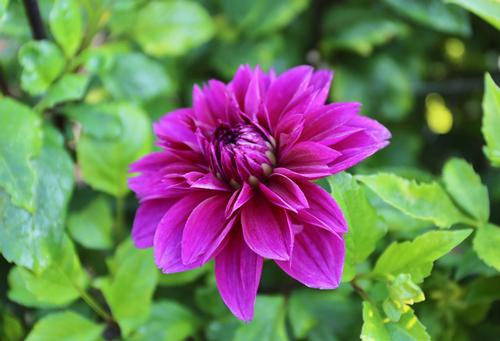Let Purple Flowers Inspire Your Creativity
The color purple may not have a big role in your wardrobe or home décor, but in a garden, purple flowers are essential for adding depth, richness and three season interest. Read on to learn how you can use purple to enhance the beauty of your gardens and landscape.
The Power of Purple
In art and literature, purple is often associated with royalty, spirituality, serenity and knowledge. Some people find that simply gazing on the color purple promotes feelings of inner peace and calm. Purple can be bold and dramatic or quiet and restful, depending on its value, tone and shade.
True purple is a balanced combination of two primary colors: red and blue. When the mix includes more blue than red, you get a cool and contemplative blue-purple. Tip the scales so there’s more red than blue for a warmer and more energetic, violet-purple. (More about recognizing and leveraging these differences in a minute.)
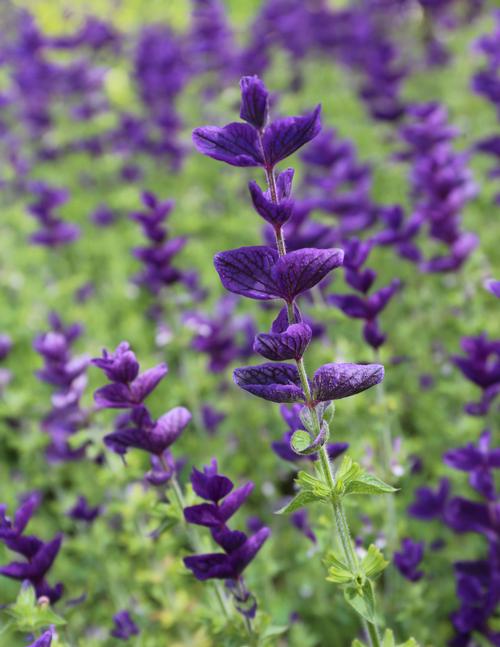
To accentuate the power of purple, pair it with yellow, its complementary color. Complementary colors are located opposite each other on the color wheel. When positioned side-by-side, they practically vibrate with energy. In fact, the effect is so dramatic, that it’s best to reserve it for accents rather than themes.
Color temperature is important when you’re working with purple – just as it is with pink. Learning how to navigate the full range of this beautiful hue is what makes designing with purple so fun.
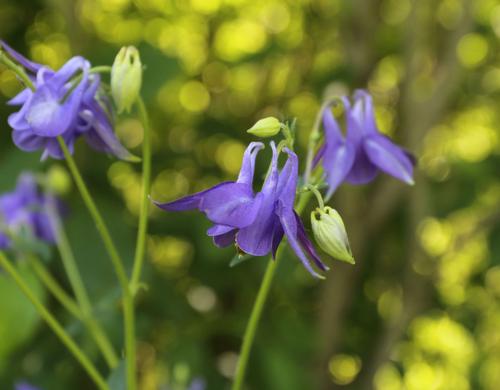
Cool Purples
Blue-purple is an intense, dark hue, sometimes called indigo or ultra violet. We experience flowers in this color range as subdued, peaceful, somber, soothing, sophisticated and contemplative.
Flowers that are blue-purple, add weight to a flower border. They are useful for anchoring bright colors, and for separating and defining others. For maximum contrast, pair blue-purple with its complementary color yellow/orange.
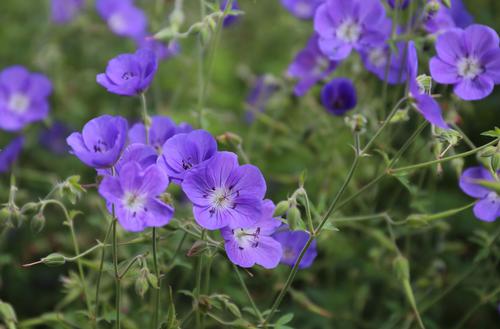
When you look out across a garden, dark, blue-purple flowers seem to recede. In garden design, you can use this quality to make spaces seem more expansive. But be aware that these dark colors have such a low light value that they can get lost in the shade. Set them off by giving them a backdrop of contrasting foliage in hues of gold, lime or grey.
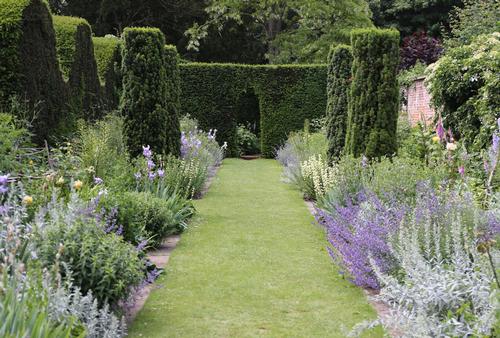
Warm Purples
Red-purples are warm, vibrant and energetic. These colors are rich, yet also bright and intense. In garden design, flowers on the reddish side of purple are useful for adding drama and for bridging the gap between red and orange. Names for these colors include deep magenta, boysenberry and mauve. Deeper shades include maroon and plum. For maximum contrast, pair red-violet with its complementary color, yellow-green, also known as chartreuse.
Plants with “purple” foliage are actually a red-purple hue that can also be called burgundy. These plants are invaluable for adding weight to a flower border and integrating the colors around them. Learn more here: How to Use Burgundy in Your Flower Garden.
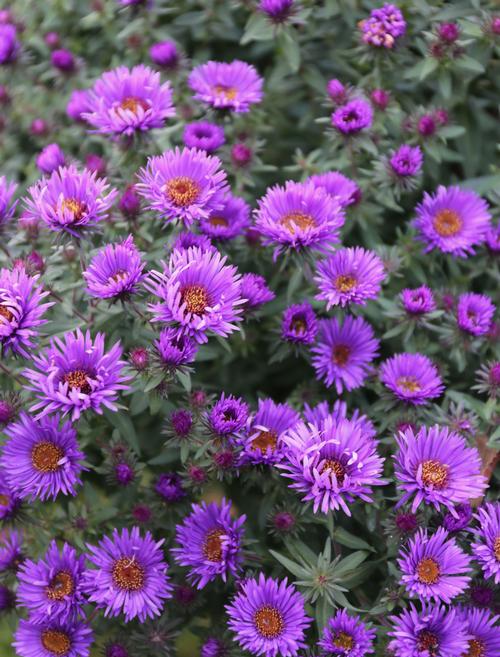
Helping Purple Flowers Work Together
Though warm purple and cool purple flowers have some very different qualities, they can work surprisingly well together. Here are a few tips:
1. Combine purples that have the same color value -- meaning a similar lightness or darkness of color. This lupine, for example, features both a warm purple and a cool purple. The colors harmonize because they have a similar value.
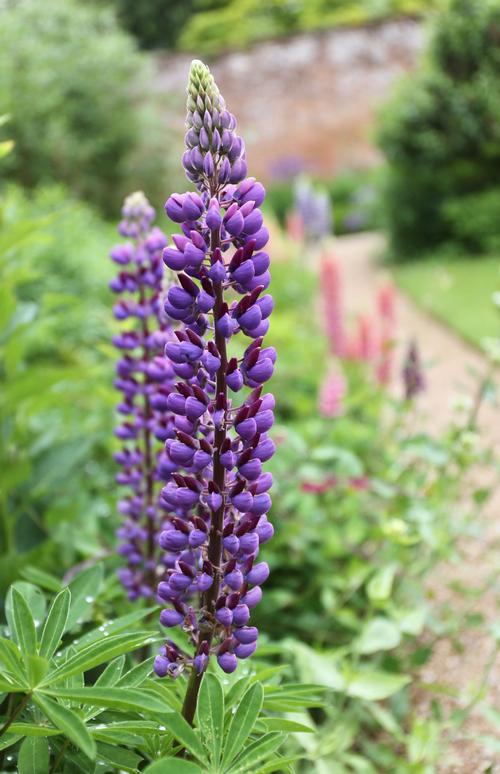
2. Combine different tints of purple. Tints are hues that are softened by the addition of white. Lavender and lilac are good examples of purple tints. Soft, pastel colors almost always work well together because they are the same value.
3. Combine flowers that are different values of the same hue. The alliums in this photo are harmonious because they are variations of the same purple hue.

Designing with Purple Flowers
Contemporary garden designers such as Piet Oudolf and Dan Pearson are known for using large blocks or rivers of color. Their designs often include purple flowers because they are so effective in mass plantings. Purple flowers help to weave other colors together and from a distance they merge into a soft purple haze. In the fall, they are perfect companions for tawny grasses. Photo at left by Clive Nichols, from the Oudolf-designed planting at Trentham Gardens.
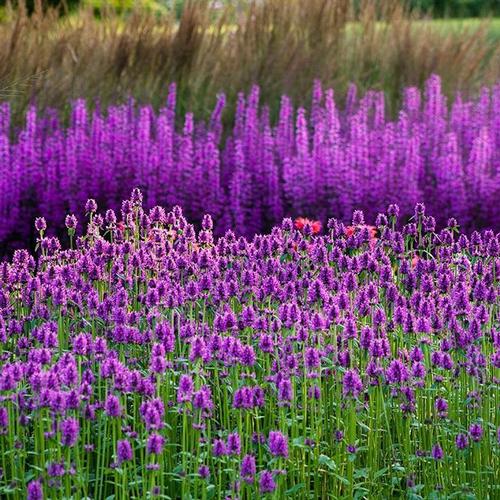
Consider taking a seasonal approach to the color purple. You can select a few purple flowers for each season or strive for one very purple crescendo. There are many purple flowers that bloom in spring, from crocuses and hyacinths to tulips and alliums. Early summer perennials include lupines, baptisia, iris, clematis and campanula. For late summer purples, look to liatris, salvia, asters, phlox and Russian sage.
Most of us can’t fit a whole garden design in our heads because it's difficult to factor in all the elements of bloom time, height, texture and color. Instead, start small and strive for some effective pairings that you can build upon. Try warm purple-cool purple combinations, complementary combinations, and combinations that include purple tints. This is the best way to learn what sorts of pairings appeal to you and work best among the other plants in your garden.
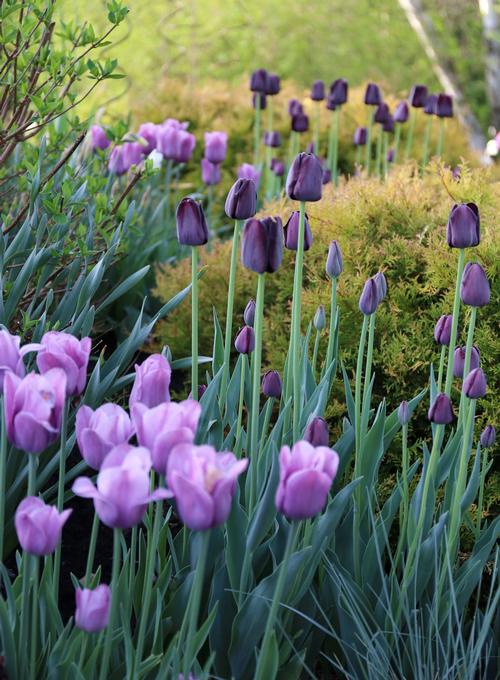
Purple Flowers for Your Garden
Bulbs: Crocus, hyacinth, allium, tulips, liatris, dahlia, anemone, agapanthus
Annuals: Heliotrope, petunia, poppy, verbena bonariensis, ageratum, nierembergia, verbena, bachelor’s buttons, statice, calibrachoa, torenia, scaevola, morning glory, sweet peas
Perennials: Clematis, baptisia, lupine, iris, campanula, salvia, asters, phlox, Russian sage, perennial geranium, viola, lavender, aconitum, nepeta, delphinium, aquilegia, echinops, platycodon, pulsatilla
Shrubs: Buddleia, lilac, wisteria, hydrangea, vitex, ceanothus, azalea, rhododendron, Texas sage, rose of Sharon
To learn more about using color, you may be interested in reading: How to Use Burgundy in Your Flower Garden, How to Use Orange in Your Flower Garden, How to Use Pink in Your Flower Garden, How to Use Red in Your Flower Garden and How to Use White in Your Flower Garden.
